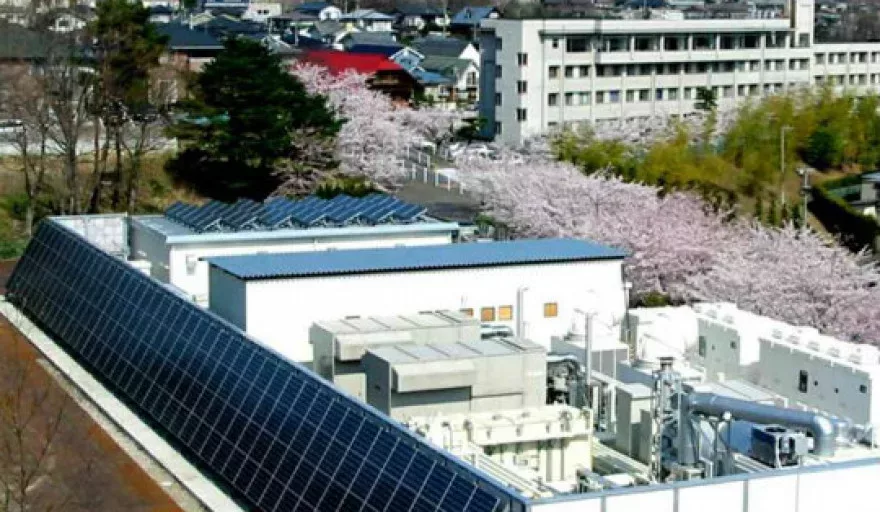Roundtable participants:
- David Porter, Senior Advisor to the Global Energy team, Navigant
- Simon Hobday, Energy Partner, Osborne Clarke
- Jacob Klimstra, Energy and Engine Consultant, Jacob Klimstra Consultancy
- Ulla Pettersson, Managing Consultant and Founder, E for Energy Management
Who have been the early adopters of distributed generation technologies, and in what scenarios does it prove an attractive option?
Simon Hobday: Generally speaking across Europe, power has been generated through large, centralised plants and distributed through a national or regional grid. This system worked very well where generation was pretty stable, controllable, and predictable. As there has been more focus on the environmental effect of carbon, and growing support for renewable energy from solar and wind which is inherently intermittent, the way that the power networks physically behave and the economics of plant generation has radically altered.
The impact of this is that in places like Germany, many fossil fuel plants have been mothballed – even new CCGT – because their operation is no longer economically viable. In contrast, smaller localised plants have grown significantly, driven by renewable subsidy, such as combining the use of heat and power; or greater use of resources, such as waste for energy plants.
Ulla Pettersson: Distributed energy generation is most attractive in places where it is expensive to connect to a grid.
David Porter: This sector is expected to expand significantly in coming years. Its recent growth is due to public policy support and renewable energy investment, notably in photovoltaics and wind power.
Jacob Klimstra: Denmark was an early adopter of these new technologies, and the country has a great strategy for integrating heat and electricity usage through distributed generation. It is generally recognised now that cogeneration substantially reduces fuel consumption and that it is an ideal back-up instrument for the fluctuating output of wind and solar based generation.
Moreover, if wind and solar sources produce more electrical energy than required by the grid, heat pumps in combination with the heat supply system of cogeneration can easily take the surplus. Small-scale generators can be very clean thanks to sophisticated catalyst technology.
Simon Hobday: Approximately two-thirds of the inherent energy in fuel is being lost as heat to the atmosphere. If that can be captured, energy conversion efficiency will increase exponentially. This means the overall energy cost is lower, less fossil fuel is used and the plant’s carbon footprint is massively reduced. Distributed energy technologies are one solution to the large amount of energy lost through transmission.
David Porter: Smaller distributed projects are generally less capital-intensive, and this can make them more attractive as investments. They are usually easier to set up and can take pressure off centralised production and distribution plants. However, one of the problems with subsidised, small scale renewable technologies is that they also take demand and revenue from the established utilities and inevitably damage traditional profitability.
Ulla Pettersson: It’s also worth noting that for plants involving combustion technology, it is better for the environment to operate a few centralised plants than lots of small localised stations, as large scale plants can afford to install environmental protection. Additionally, there’s no environmental damage caused by transporting electricity over cables. Lots of small plants without the necessary equipment and processes can be even more harmful as a single large plant, because delivery is not cost-effective to them.
On-site power is a prominent form of distributed energy. In what contexts is it most common today, and where might we see it used in the future?
David Porter: Europe is making a conscious effort to reduce carbon emissions, as is seen with the 2020 targets, meaning smaller renewable energy enterprises are here to stay. Established utilities, therefore, must figure out how to accommodate them while maintaining profitable traditional plants that are vital for meeting energy demands when the sun doesn’t shine or wind doesn’t blow.
Simon Hobday: While the traditional generator model has suffered from the subsidy for renewable generation, a new economic model is emerging, and this points towards what we might see in the future. Over the past five to eight years we have seen significant deployment of solar and wind generation. As part of this deployment, smaller developers have taken advantage of economic incentives to construct low carbon plants with long term operation and power sale contracts, and then recycling the capital by selling the generation assets – or economic interest in the assets – to financial investors.
While much of this generation has been standalone, wind farms being an excellent example, an increasing amount is being linked to commercial and industrial sites, as well as institutional buildings such as schools, hospitals and universities. As the European sector reacts to the Commissions drive to increase overall energy efficiency, we are likely to see more of these initiatives.
Will co-generation and tri-generation technologies be largely privately-funded, or do you expect public-private partnerships (PPP) and subsidies to play a role in driving further adoption?
Simon Hobday: It’s a little of both. Consider district heating. Currently systems in many parts of Europe are sparse and fragmented. A good example of this is London where there are various new and older developments in, for example, King’s Cross, Islington, Greenwich, Pimlico and soon to be in Battersea. However, the projects have been designed and built as isolated systems with either private finance or public funding. The challenge, then, is how to connect these isolated areas.
The pipe work is extremely expensive – approximately £1.5 million per kilometre. While the economic case for heat in each development can, and is, made, the economics of longer transmission pipes ahead of future connections is more difficult. However, without this infrastructure wider deployment of heat will be held back. It is in respect of this interconnecting pipework that public support could make a significant impact.
David Porter: Smaller-scale co-generation is probably less likely to require public funding. There is a big difference between a co-generation scheme for a factory or an apartment block and a district heating scheme for a large area of city; that’s the kind of infrastructure where public sector involvement seems almost inevitable.
Ulla Pettersson: Also consider though, that co-generation is a long-term investment, and the demand for heat in most European locations is not a competitive market. As such, consumers rely on regulators to govern pricing, and this makes risk assessment difficult for private capital investment. Consequently, public funding is a more natural solution.
Currently most of co-generation in Europe is heat distribution to households; it’s considered part of the responsibilities of the public service, and it’s a typical principality matter. For this type of co-generation public funding makes the most sense. Heat in the industrial distribution sector, however, is much more likely to have private funding, as it presents a business case that’s easier for an investor to understand.
Jacob Klimstra: Citizens generally do not like to be controlled by large anonymous companies so this could present an opportunity for people to actively participate in investment in local generation through crowd funding. However, there is a risk that government-controlled subsidies could undermine these efforts. Renewable energy enterprises need reliable financial back up. Insecure subsidies due to volatile policies of governments will only distort the market.
The forthcoming POWER-GEN Europe and Renewable Energy World Europe conferences being held in Amsterdam from 9-11 June 2015 is the place for the renewable power industry to meet, share information and do business. For more information go to: www.powergeneurope.com
This is the final roundtable discussion of five that have been published each Friday on Europe Outlook in the lead up to POWER-GEN Europe.
Week one: Coal and Gas-Fired Plants
Week two: Electric Vehicles
Week three: Nuclear
Week four: Utility Portfolios and Business Models



















